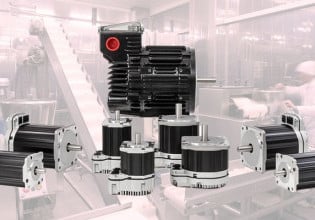There’s This Thing Called ‘Skin Effect’ in Wires: What Does it Mean to You?
Current flow in wires is often modeled with a perfectly circular cross-section, with the size of the wire being responsible for the maximum current. This is true, but there’s more to the story.
Introductory electrical classes will have you believing some pretty wild stuff.
Most of that wild stuff is totally true. For example, did you know you can get 1000 volts from a couple of AA batteries? Yeah. Did you know that you can create magnets out of just some loops of wire? Yep. But some things are over-simplified to the point that once we really understand what is happening, our understanding of electricity is thrown off from that perfect ‘ideal’ academic foundation.
One of these subjects happens to be the concept of skin effect and how it relates to the flow of current in wires.
Does Current Flow in Conductors?
Obviously, the quick answer is ‘yes.’ That’s why they are called conductors: they conduct electrical current. They do have a resistance that is primarily due to three factors.
- Size (gauge) of the wire
- Material of the wire
- Temperature of the wire
Those initial two are the dominating players in the resistance equation, but I want to take a moment to investigate the first one in greater detail.
How, exactly, does the size of the wire affect current flow?
In many cases, I like to envision electrical current as water. It flows through pipes, and smaller pipes will cause restrictions in the flow rate, just like resistance. These restrictions, in turn, lead to pressure drops, which act just like voltage drops in a circuit.

Figure 1. Many different wire types exist to minimize the problematic effect of resistance from various sources. Image used courtesy of Canva
However, there is a phenomenon in fluid flow called the ‘boundary layer’ which takes me back to fluid dynamics in college, in which I didn’t pay attention nearly as well as I should have (sorry Dr. Solovitz). This boundary layer shows that the friction interaction with the walls of the pipe or tube causes the fluid to become turbulent and travel more slowly near the edges of the pipe.
The result of this layer is that when you have a small tube, increasing the pressure will only work up to a certain point. Eventually, the pressure increase cannot overcome that boundary layer friction, and you are wasting your energy input into the system.
In electrical systems, the outer edge of the wire is also important, but the end result is quite different.
When is This Skin Effect Important?
For experienced electricians, there are many familiar differences in the algorithms for AC vs DC circuits, with impedance being the most important. This skin effect is another. It only influences AC circuits, and it is proportional to the amount of current being pushed through the wire. Therefore, it becomes most influential in high-power AC systems such as motor power delivery and grid transmission systems.
For most low-power or DC systems, this entire article may be nothing more than a quick read, a sip of coffee, and a low murmur of ‘huh, that’s interesting’.
Ok Come On, What IS the Skin Effect?
Okay, okay, I’ve dragged it on long enough. The skin effect means that in an AC circuit, more of the current will travel along the outside edge as compared to the current going through the center of the wire.
As you might have guessed from knowing AC circuits (if you don’t, I suggest you read up on some of our many AC inductance articles), one of the main causes of resistance to current is induction. The rapid change of the direction of voltage causes a buildup of a magnetic field in the surrounding medium (often air or ferrous metal) which then impedes the flow of current in the opposite direction upon field reversal.
In any wire or metal core, the flow of current creates a small circular current within the wire itself (this is called eddy current) generated by the alternating (AC) electrical field. This impedes the flow of electrons, and it is greatest at the point where there is the most surrounding material, in other words, the center of the wire. The skin effect becomes more extreme as the frequency of the AC current increases. For normal 60 Hz operation, it’s fairly predictable.

Figure 2. The inside of a strand of wire (blue) will carry less current than the outside (red). Image used courtesy of the author
Because of this impedance, the greatest resistance to the flow of electricity is in the center of the wire. The current flow is then at its greatest along the outside edge of the wire.
This is exactly the opposite of the fluid boundary layer.
Why Does Skin Effect Matter to Engineers?
When we look up the size rating for wires, it’s based on current. There are numerous tables that match the cross sectional area (in AWG, kcmils, and mm2) with a maximum current rating for copper and aluminum. Often the operating temperature will make a subtle difference as well.
| Size (AWG/kcmil) | Size (mm2) | Amps (Cu @ 75 °C) |
| 8 | 8.4 | 50 |
| 6 | 13.3 | 65 |
| 4 | 21.2 | 85 |
| … | ||
| 1250 | 633 | 590 |
| 1500 | 760 | 625 |
| 1750 | 887 | 650 |
| 2000 | 1013 | 665 |
Table 1. Excerpt of Table 28.1 from UL 508A rev. 2018
Take a close look at these tables. For reference, I am using Table 28.1 in the UL 508A 2018 standard. As I look at the entry for 6 AWG (13.3 mm2) copper wire, I see that it’s rated for up to 65 amps.
What wire size would I need to allow 10x the current, or 650 amps? I see that I need a 1750 kcmil (887 mm2) wire.
This does not appear unusual at first glance; as anyone knows, of course you need a larger wire to handle more current.
But look closely at those ratios. From the first value set, it would appear that each mm2 can handle about 4.9 amps (65/13.3). If the cross-sectional area is exactly doubled, that means the number of copper atoms available to conduct electrons across that point has also exactly doubled, so it would stand to reason that if we increase the area by a certain percent, the max current should increase by exactly the same percent. If this predictable linear increase is true, then our larger wire, being 887 mm2, should be able to handle over 4300 amps, not the relatively small value of only 650 amps.
The reason is that the innermost section of wire allows those eddy currents to form and flow, increasing the resistance so that most of the current flows along the outside edge of the wire, effectively increasing the average resistance of the wire disproportionately to its increase in size.
What Can We Do to Solve Skin Effect?
In most cases, there is no point in worrying about it when you have helpful charts and tables to select the right wire size. In fact, local regulations will likely require a minimum wire size.
There are some strategies to overcome the problem of eddy currents.
One solution is using stranded as opposed to solid core wire. For some large wires, solid core might not even be an option. The strands (even without insulation) provide a small gap in the material, preventing much of the eddy current from forming. This is the same strategy used in high-voltage transmission lines which use bundled conductors for flexibility, increased cooling with larger surface area, and the reduction of skin effect resistance.

Figure 3. Four kinds of wires, with decreasing skin effect resistance from L-R top to bottom. Image used courtesy of the author
If the strands are individually insulated, then the eddy currents will be almost entirely removed, except for a very small amount remaining in the smaller wire strands. This is the exact same reason for lamination layers found in transformer cores and motor rotors. The downside to this strategy is the higher cost of these wires.
So, in the end, this topic may not influence your designs and your practices a great deal. However, it is important to understand the physics behind the flow of electricity to know why certain regulations and operating characteristics exist and why they might be worth preventing.







Thats the reason, In analog signal cable (4-20 mA) stranded wire is preferred over solid or single strand